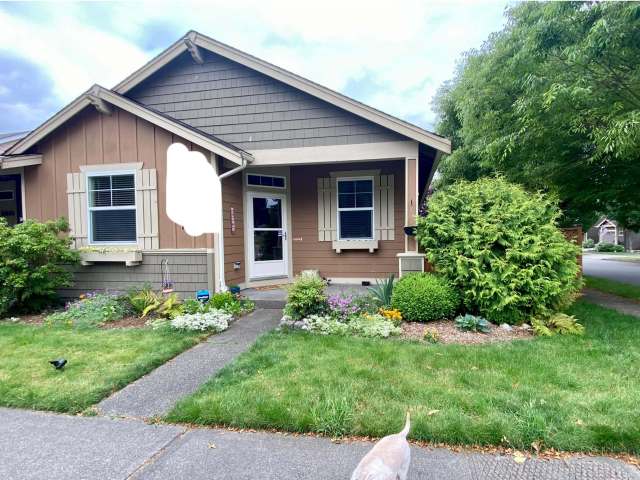One Redditor couldn't wait to get started on transforming their new lawn into something much better with the help of advice from their fellow r/NoLawns commenters.
The anti-lawn movement has gained momentum for several reasons. It gives homeowners a chance to express themselves with yards more varied than the traditional turf grass lawn, and it offers the opportunity to help the planet by supporting local wildlife. Meanwhile, compared to water-guzzling lawns, many other forms of landscaping — including native plants, clover lawns, and xeriscaping — are cheaper and lower maintenance.

The incredible range of options available was why this Redditor needed help. "New to owning a yard. Want to get rid of the grass," they said. "What would you do with this lawn?"
Their photo shows a charming home on a corner lot. While there are some trees, bushes, and flowerbeds visible, there's also an L-shaped lawn enclosing the home and a "hellstrip" between the sidewalk and the road — a notoriously difficult place to grow anything.
The Redditor did their homework and shared their homeowners association's guidelines in a comment. "Ground cover must occupy at least 50% of the surface area of the front yard from the front of the house … Ground cover is defined as grass, bushes, and other living plants excluding those commonly considered weeds. These plants must be trimmed and maintained. The remainder of the yard surface may be covered with appropriate inorganic material such as rock or stones, or organic material such as bark, or kept bare, but shall be well maintained and kept free of weeds."
But commenters recommended they go a step further with their research. "Check your city code for setbacks and vision restrictions, especially on a corner lot because of drivers trying to see around the intersection. You may have to keep the shrubs within a distance of the sidewalk below a particular height," said one user.
Still, that left plenty of room to get creative. "Cottage garden," suggested one commenter.
"I would put wood chips over the grass and put in a lot of native shrubs and a couple small trees," said another user. "In the widest spot, put a bench between two ferns. Finally, install a free little library."
"Visit your state's Cooperative Extension Service website and search native plants," said a third user. "Natives evolved in your climate conditions and will generally be disease resistant and pollinator friendly."
Join our free newsletter for easy tips to save more, waste less, and help yourself while helping the planet.









